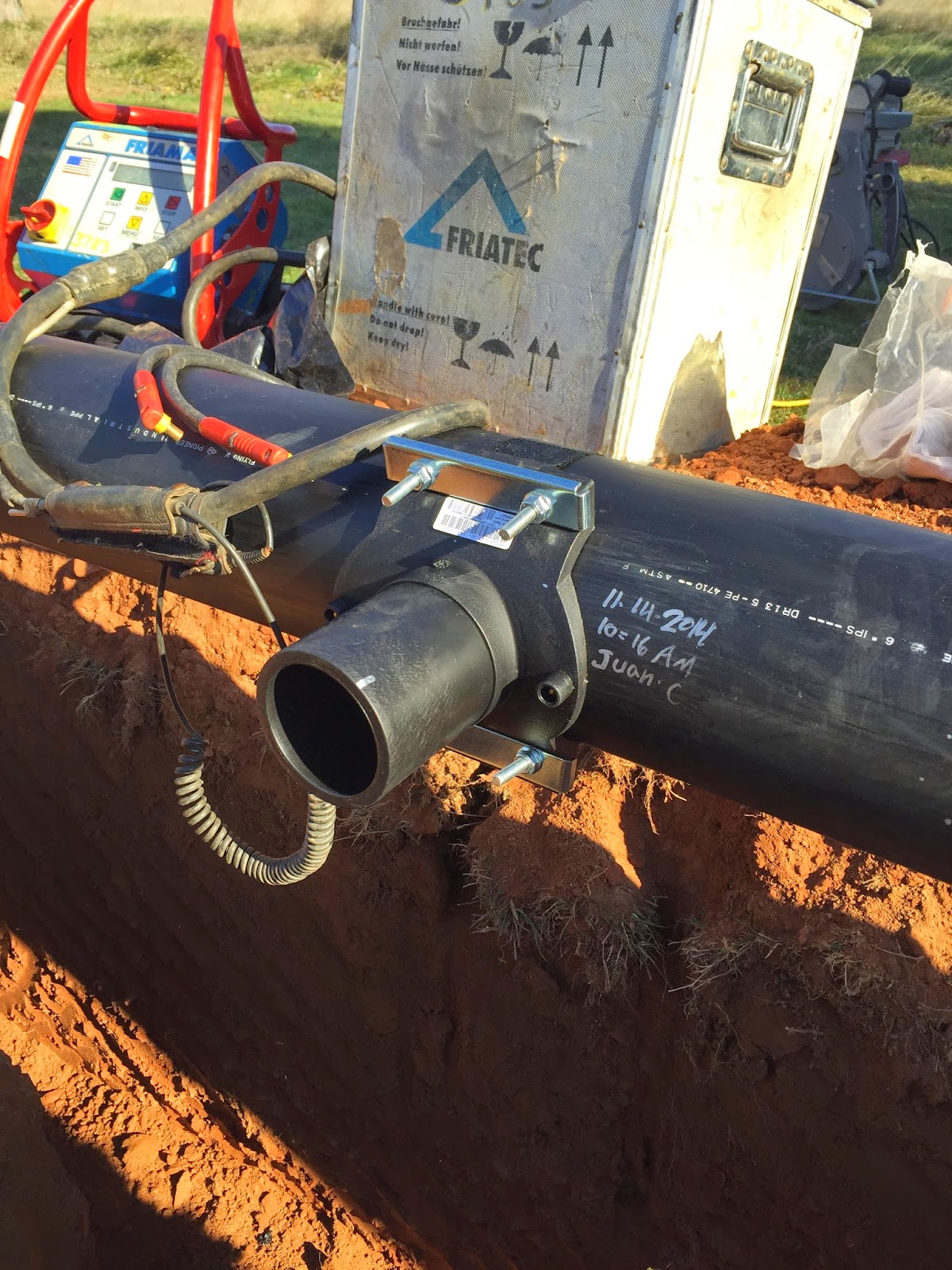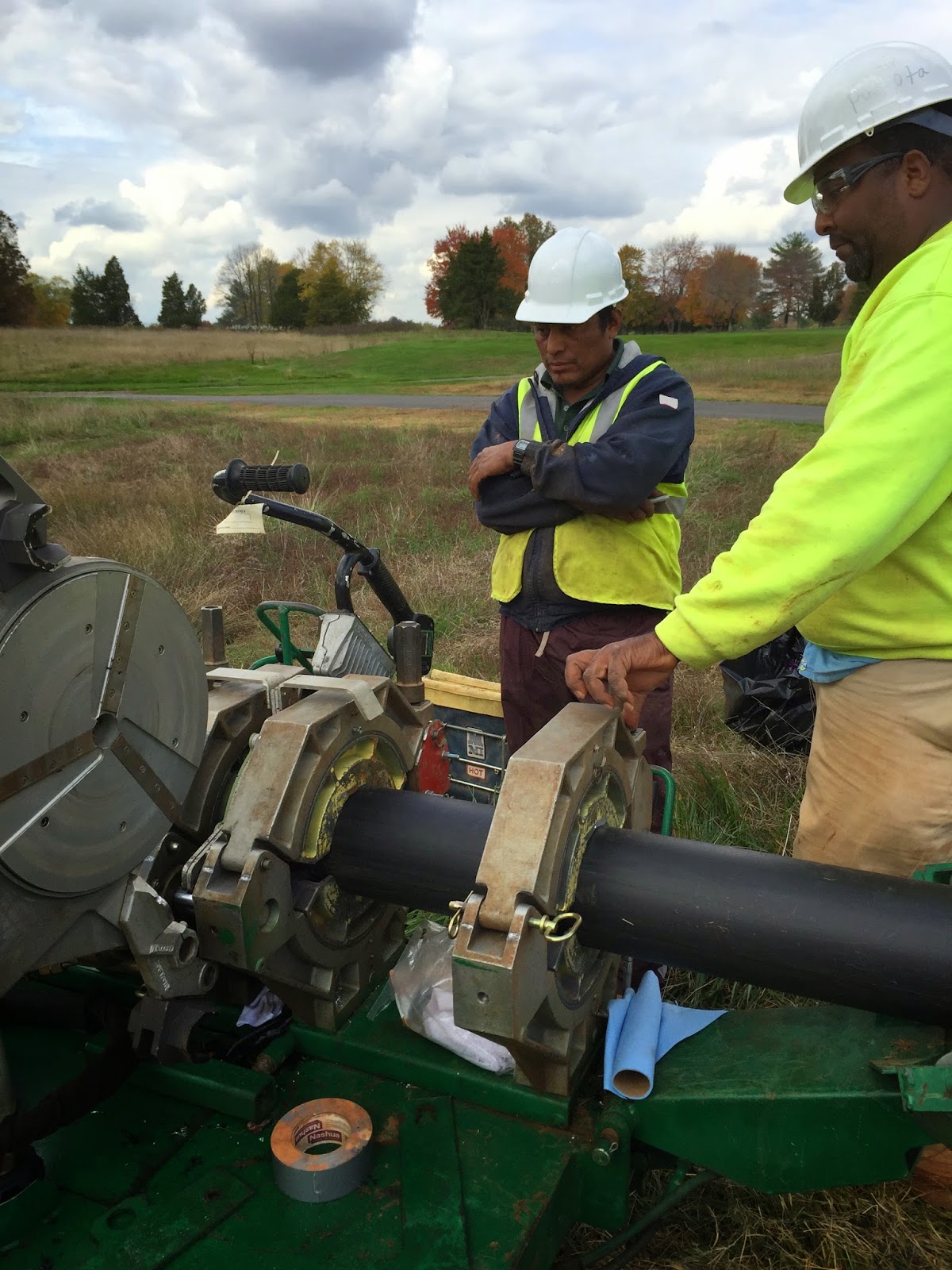A number of locations
throughout the new irrigation system call for electrofusion branch saddles rather than a butt
fusion tee. An example of one of these locations would be a feed for a
tee complex. Electrofusion saddles are used in these locations to
create a branch off of the mainline without cutting the pipe. This cuts
down on the number of welds needed to create each branch.
Electrofusion is a method of joining HDPE pipe
with special fittings that contain built in electric heating coils which are
used to weld the joint together. A Friatec Friamat Fusion
Unit is used to electrically heat the heating coils.
Friamat Fusion Unit
The process of electrofusion welding
begins by locating where the fitting is to be welded. This location is
then marked and the fitting is removed. The surface of the pipe is now
scored using a special scraper, exposing virgin material. This process is
key for proper electrofusion.
Next, the scored surface of the pipe and the surface of the fitting are
cleaned using a using a lint free rag and oil free cleaner. The fitting is
then placed in the location of the weld and strapped securely to the pipe.
HDPE pipe is scored and cleaned.
The electrofusion saddle is then strapped securely to
the pipe.
Once
the fitting is strapped to the pipe, electric leads from Friamat unit
are connected to the connection points on either side of the fitting. The
bar code on the fitting is then scanned, telling the Friamat Unit
exactly how long the heating process must last. Voltage is then applied
to the heating coils for the specified amount of time. The built in heating coils then melt the inside of the fitting and the outside of the pipe wall,
which weld together producing a very strong homogeneous joint. After the
weld is complete, the weld cools for a specified time depending on the fitting.
The weld is then signed and dated.
Leads are connected and barcode is scanned.
Welding in progress.
Completed weld is signed and dated.
When
the weld is completely cooled, a special hole saw is used to remove the section
of pipe in the center of the branch. This special bit makes sure to
retract the section of pipe being removed. A small vacuum can now be used
to remove any left of over filings from the drilling process. Once all of
these steps have been completed, HDPE pipe can be butt fused directly onto the
end of the branch saddle.


















































